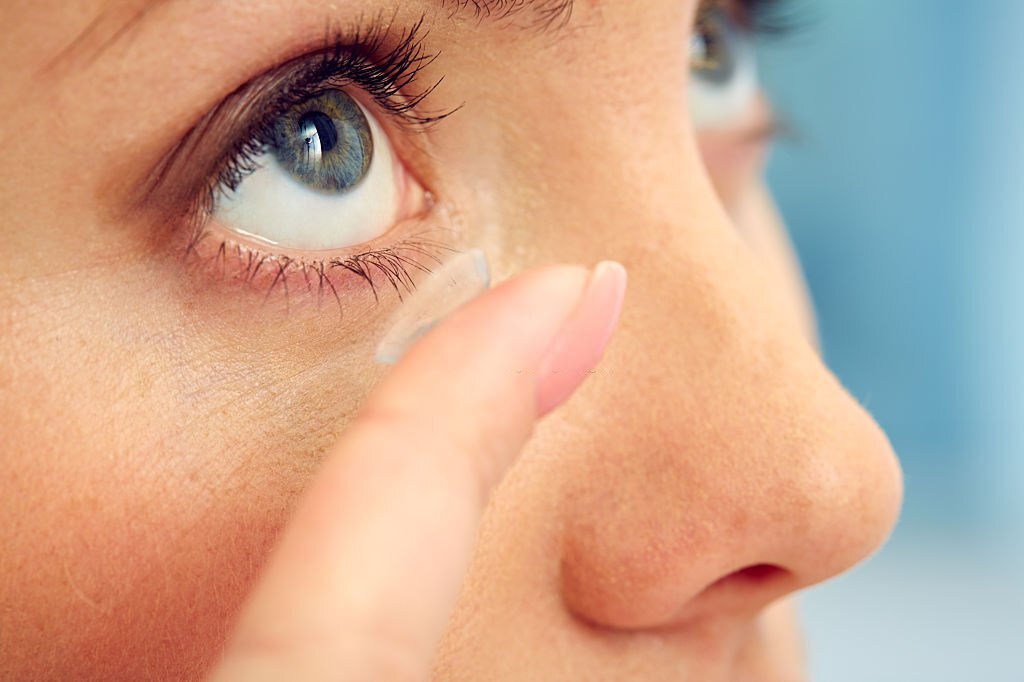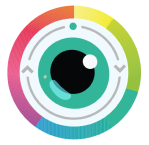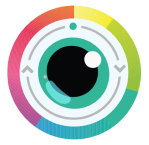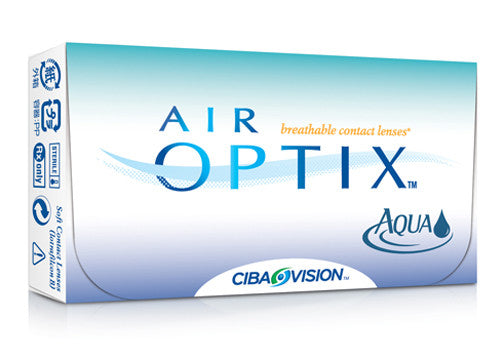
Searching for the best contacts for dry eyes? You might have noticed your eyes blurry after taking contacts out. Or perhaps you've been wondering, are daily disposable contacts better for dry eyes?
At Fresh Lens, our extensive expertise and commitment to quality have led us to a curated selection of contact lenses that will bring you the relief you need.
Brands like Acuvue Oasys and Air Optix have emerged as top choices for those battling dry eyes. This article dives deep, not just into brand recommendations, but also into understanding the lens types best suited for those with dry eyes or allergies.
What this article covers:- Best Contact Lenses for Dry Eyes
- Types of Contact Lenses for Dry Eyes (And Allergies)
- What to Look for in Contacts (For Dry Eyes)
Best Contact Lenses for Dry Eyes
Finding the right brands of contact lenses that offer a harmonious blend of comfort, moisture retention, and impeccable vision is crucial.
Let's take a look at the top contact lenses that combat dry eyes.
Acuvue Oasys 1-Day
Based on our observations, Acuvue Oasys 1-Day emerges as a lifesaver for individuals grappling with dry eyes, firmly establishing itself as one of the frontrunners in the contact lens industry.
Designed to combat the challenges of dryness and irritation, these lenses are a testament to the brand's commitment to both comfort and convenience.
Central to its efficacy is the groundbreaking HydraLuxe technology. More than just a moisture-enhancing feature, HydraLuxe is a sophisticated technology crafted to maintain the moisture of natural tears.
This innovation becomes especially significant considering the frequent complaints of dry eyes, often exacerbated by factors like air conditioning or extended screen time.

Air Optix
The smooth surface of the Air Optix lenses is not merely a product detail but a well-thought-out design element. By minimizing friction, these lenses become an optimal choice for individuals suffering from dry eyes.
The reduced friction ensures that the lenses glide smoothly on the eye surface, lowering the chances of irritation or discomfort.
When it comes to achieving unparalleled comfort and breathability in the world of contact lenses, air optix contact lenses stand out. One of the most commendable features of these lenses is their heightened emphasis on breathability.
The design of Air Optix lenses is a testament to innovation in the optical industry, permitting a significant amount of oxygen to permeate, thereby ensuring that the eyes remain fresh and revitalized throughout the day.
Dailies Total 1
In the vast world of contact lenses, dailies contact lenses have emerged as a popular choice for many. Renowned for their convenience and hygienic properties, dailies have revolutionized the way people view and experience contact lens wear.
Among these, Dailies Total 1 stands out, thanks to its pioneering approach to comfort and hydration.
Famed for its water gradient technology, Dailies Total 1 is not just another product in the dailies contact lenses category. Its groundbreaking design ensures that the outermost surface of the lens remains almost 100% water. This is a significant stride in contact lens technology, and the benefits are palpable.
With such a high water content on its surface, the lens offers a silky-smooth experience for the wearer. This is akin to the natural feeling of one's eye, with the lens virtually disappearing once inserted.
1 Day Acuvue Moist
At the heart of the 1 day acuvue moist lenses lies the patented Lacreon Technology. Lacreon's unique design principle is based on embedding a moisture-rich wetting agent directly into the contact lens matrix.
Unlike other methods where moisture can dissipate over time, Lacreon ensures that the hydration remains trapped within the lens, providing a stable and enduring tear-like environment.
For those who experience the nagging discomfort of sensitive or dry eyes, this feature is nothing short of revolutionary.
Dailies AquaComfort Plus
Designed with blink-activated moisture technology, Dailies AquaComfort Plus releases moisture with every blink, ensuring consistent comfort. It's an ideal choice for those who spend long hours in air-conditioned environments or in front of screens.
Types of Contact Lenses for Dry Eyes (And Allergies)
Contact lens wearers who battle with dry eyes or allergies know the struggle of finding the right lenses. The discomfort can range from mild itching to severe irritation. Thankfully, lens technology has evolved significantly, providing various options to cater to these specific needs.
Let's examine the different types of lenses that offer relief and clarity.
Daily Disposable Lenses
Daily disposable lenses are the epitome of convenience in the contact lens world. Designed for a single day's use, you pop them in every morning and then simply discard them at night, embracing a fresh start every day.
Beyond the convenience factor, daily disposables have a health advantage. Our findings show that using a brand-new pair of contact lenses every morning helps to relieve allergies. This not only ensures crystal-clear vision but also minimizes potential irritations.

Scleral Lenses
Why choose scleral contacts for dry eyes? Slightly larger in design, scleral lenses comfortably rest on the sclera, the eye's white portion. Their size might be a tad bit intimidating initially, but they're crafted with purpose.
Why are they a game-changer? The beauty of scleral lenses lies in the unique design that ensures they don't make contact with the cornea. Instead, they create a hydrating reservoir between the lens and the corneal surface.
This consistent hydration system is a boon for those who constantly battle the discomfort of severe dry eyes, providing them with unparalleled comfort and vision clarity.
What to Look for in Contacts (For Dry Eyes)
Dry eyes require special considerations to ensure that wearing contacts doesn't exacerbate the problem, making it essential to understand what to look for.
Let's take a look at the important factors to consider when choosing contact lenses.
Water Content
A lens with a high water content can provide your eyes with added hydration. This sounds like a dream for those with dry eyes, right? However, consider this. Some lenses with excessively high water content can paradoxically pull moisture from your eyes. Drawing from our experience, it's all about striking the right balance.
Our tip? Don't just look at the water percentage, but consider how your eyes respond to different lenses.
Soft VS. RGP Contact Lenses
The choice between soft and RGP isn't black and white. Depending on your eye condition and personal comfort preferences, one might be more suitable. For instance, certain dry eye conditions could benefit from the properties of RGP lenses.
Soft Lenses
Soft contact lenses are made from pliable plastics that adapt seamlessly to the eye's curvature. This inherent flexibility offers wearers an immediate sense of comfort upon insertion.
They are specifically engineered to allow a significant amount of oxygen to permeate, ensuring that the eyes remain well-oxygenated and healthy. However, one of the potential drawbacks of soft lenses is that, over time, they might not retain their original shape as effectively as Rigid Gas Permeable (RGP) lenses do.
RGP (Rigid Gas Permeable) Lenses
Rigid Gas Permeable (RGP) lenses are a type of contact lens characterized by their firm structure. This rigidity ensures that they consistently maintain their shape, which can offer wearers crystal clear vision.
Despite their solid nature, RGP lenses are specially designed to permit a high degree of oxygen to flow through them, ensuring the eyes remain breathable and comfortable.
This oxygen permeability is particularly beneficial for certain dry eye conditions, with some individuals finding notable relief when using RGP lenses.
A potential downside for some users is the initial adjustment period. Given their rigidity, RGP lenses might require a bit more time for wearers to get accustomed to, especially when they are first introduced.
Fit
When a lens is well-fitted, it moves minimally during blinks, helping maintain the appropriate level of moisture, and allowing for a continuous tear film beneath the lens. This tear film acts as a cushion between the lens and the cornea, preventing friction and irritation.
In contrast, a generic, poorly fitted lens can disrupt this tear film, leading to areas of dryness on the corneal surface. Such disruptions can exacerbate the sensation of dryness, potentially causing a feeling of grittiness, burning, or even a stinging sensation.
Breathability
Oxygen flow is crucial for eye health. Look for lenses made from silicone hydrogel, which tends to offer high oxygen permeability. They're often the preferred choice for keeping eyes healthy and bright.

Conclusion
Being a sufferer of dry eyes doesn't mean you can't wear contact lenses. With the right type, they will be so hydrating and comfortable, you'll forget that you're even wearing them.
The advancements in the optical industry have made it possible to find colored contacts for dry eyes that don't compromise on comfort or vision.
The key to the ultimate contact lens lies in choosing lenses with the right water content, ensuring optimal fit and breathability, and adhering to a diligent care routine. Brands like Acuvue Oasys and Air Optix are celebrated for their efficacy in addressing dry eye concerns.
Don't wait to achieve the comfort and clarity you deserve. Explore our range of trusted brands today and find the perfect solution for your eyes!
If you want to learn more, why not check out these articles below:
- Can You Use Contact Solution as Eye Drops?
- Best Contact Lens Solution
- Can I Leave My Contact Lenses Without Solution?
- Does Contact Solution Help with Red Eyes?
- Does Contact Lens Solution Expire?
- How Long Can Contact Lenses Stay in Solution?
- Can You Flush Your Eyes with Contact Solution?
- How Much Are Contact Lenses?
- Best Place to Buy Contact Lenses
- Can You Return Contact Lenses?
- Can You Buy One Box of Contacts for Both Eyes?
- Contact Lens Solution After Opening






































